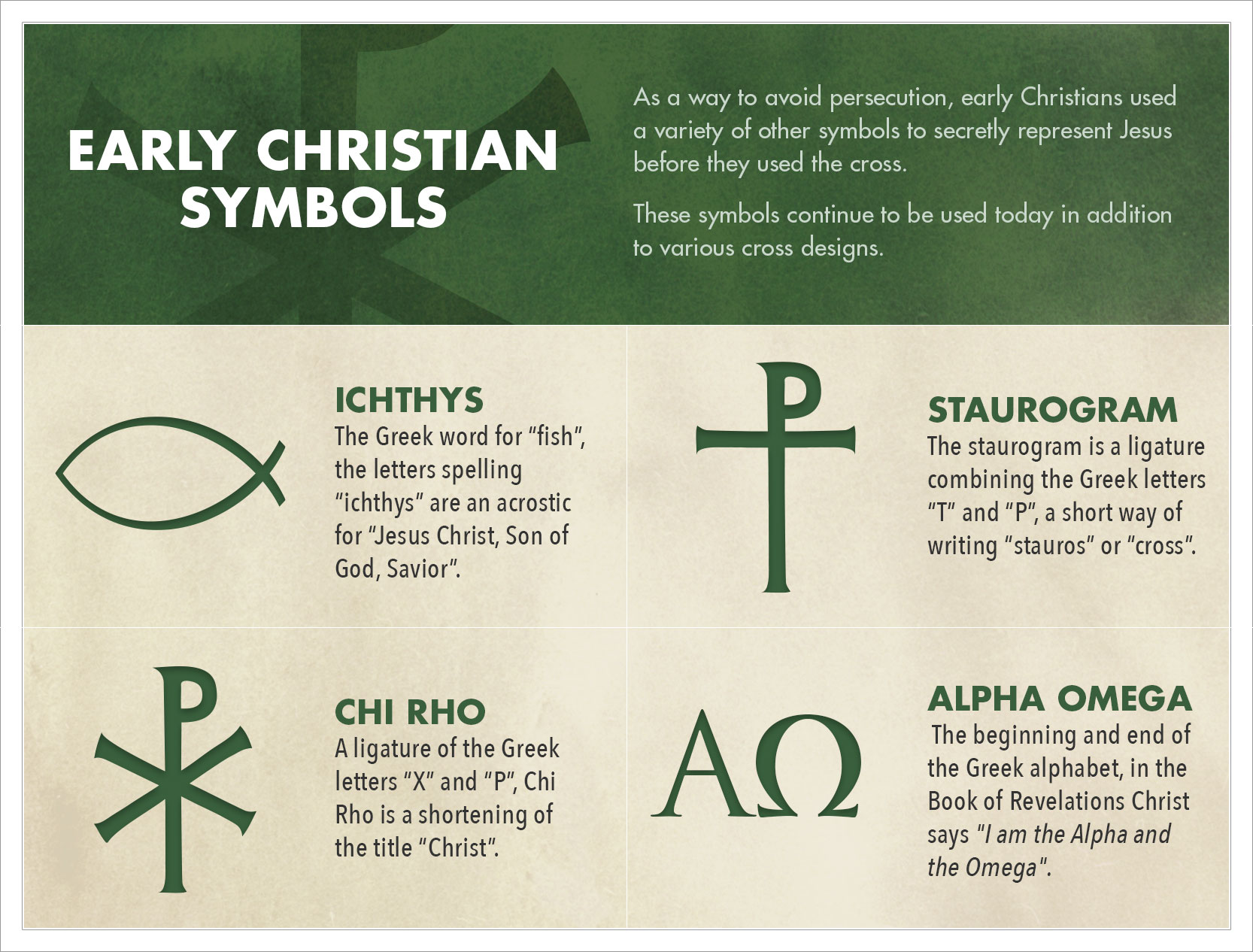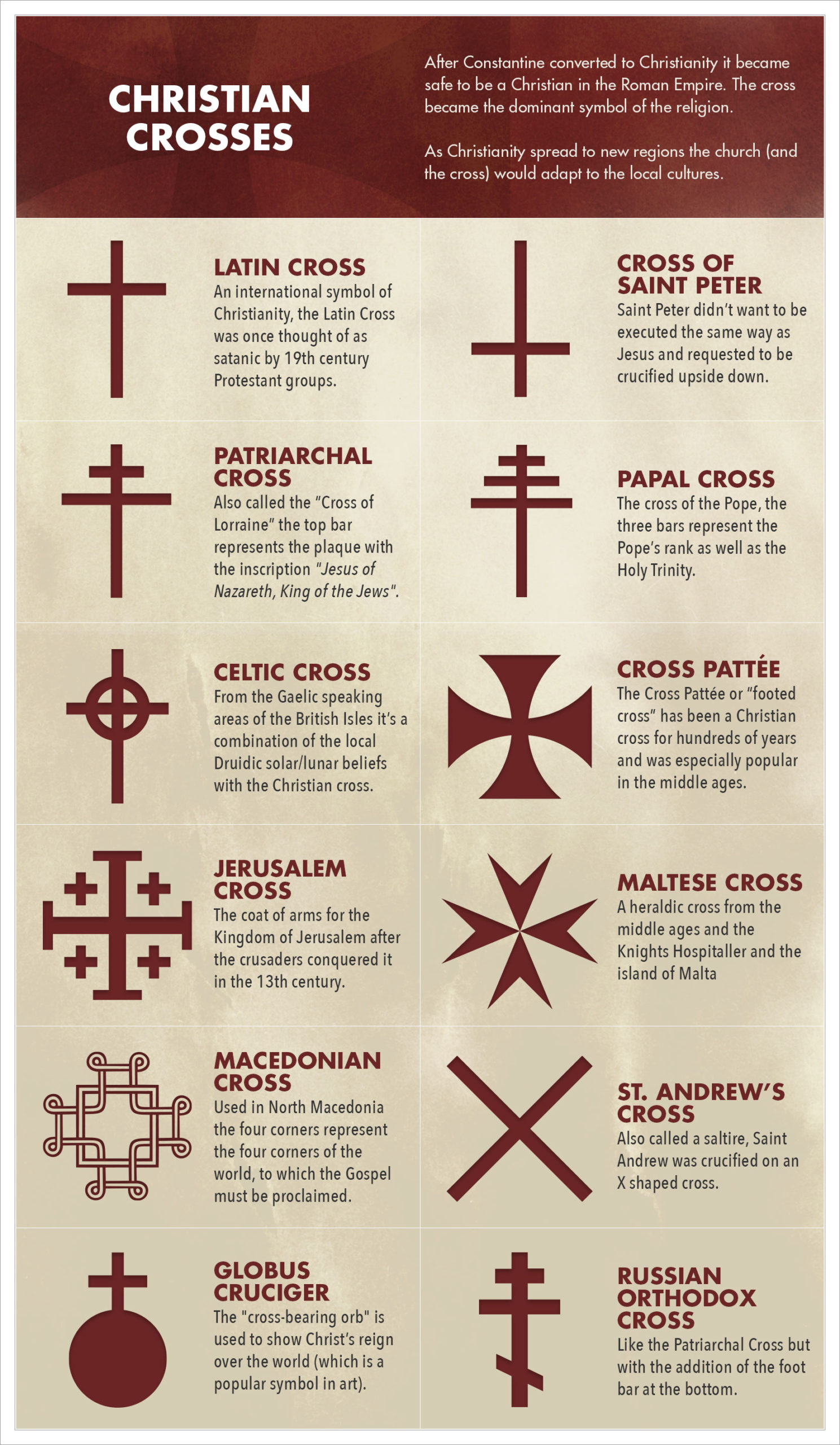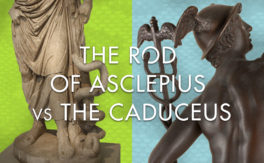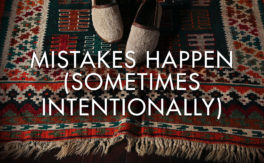As one of the oldest ideograms in the world, the cross represented a lot of things long before it represented Christianity. Now it represents all of that and more.
Before the cross was associated with Christianity, it had a long history with ancient cultures around the world. The symmetrical intersection of two lines is a pretty simple idea, plus it’s easy to draw/carve on almost any surface. As such it’s understandable that different people at different times have each created their own cross symbols – an early example of multiple discovery, or maybe the collective unconscious.
While designs & purposes vary from culture to culture there are reoccurring themes. For pre-Columbian cultures of North America the four points of a cross are frequently used to represent the four cardinal directions, the four seasons, the four winds, and/or the four primary forces of nature. The Greek cross corresponded to the four fixed signs of the zodiac (Leo, Taurus, Scorpio, Aquarius). In a similar interest with the number four, European alchemists would later use the cross as one of the symbols for the four platonic elements.
In the Chinese language the cross is a sign for “perfection” as well as the character for “ten”. Interestingly, in Roman numerals a cross turned 45 degrees (an X) is also the sign for ten, but in Chinese the X sign was an early symbol for the number “five”. The X symbol in Egyptian hieroglyphics meant divide, count, and break into parts. Speaking of math, the cross as mathematical “plus” sign came much later around the 14th century and the “x” for multiplication came around the 17th century.

If we expand our definition of a cross and make some simple alterations we get even more results. The Inca have the Chakana, a stepped cross symbol representing different levels of existence. Turned 45 degrees the stepped X symbol Aban is the Ghanaian Adinka symbol for “castle” as well as “strength”.
A cross in a circle ⊕, such as the Solar Cross (wheel cross, Odin’s cross), has been used by people for thousands of years around the world (and recently by white supremacists). It can represent the sun, a solar deity (such as the weather/solar god Baal of the Middle East or Shamash in Babylon), the wheel of a sun gods’ chariot, in China it represented thunder/power, it’s the mon of the Shimazu clan in Japan, etc. A cross amulet for a sun god made of four triangle shapes (like the Cross Pattée ᛭) can be seen in the 9th century BCE stela of the Assyrian King Shamshi-Adad V. A cross with slight bars on the ends is the ancient Chinese sign for a wū ☩, a shaman or sorcerer. Add a rounded shape to the top of a cross and you have the Egyptian hieroglyph Ankh ☥. Finally, one of the most famous (and later infamous) altered crosses is the swastika which has a very extensive history by cultures around the world long before its use in the 20th century.
Christianity Before The Cross
The cross gained a new meaning after the crucifixion of Jesus … but not immediately afterwards. To start, it’s unclear what kind of cross Jesus was crucified on. It could have been a pole, it could have been shaped like a capital “T”, or it could have been the lower case “†” shape we are familiar with. Regardless of cross shape, as a way to avoid persecution, early Christians used a variety of other symbols to secretly represent Jesus before they used the cross. The Ichthys (the “Jesus fish”), the peacock, the pelican, the dove, an anchor, as well as the letters Alpha & Omega were all early Christian images containing hidden meaning symbolizing Jesus.
It wasn’t until 300 years after Jesus that the cross became a widespread symbol of Christianity. Constantine, the 4th century Roman emperor, not only stopped the Roman persecution of Christians but also became the first Roman emperor to convert to Christianity. Supposedly he had a vision of a symbol in the sky followed by Jesus telling him to make that symbol the symbol of God, that it would protect him from his enemies. From this Constantine ordered all of the shields and banners to feature this new design.

Exactly what this symbol supposedly was however is debated. Some say it was a cross but others say it was the staurogram. The staurogram is a ligature combining the Greek letters “T” and “P” to form ⳨ which was an abbreviated way of writing “stauros” or “cross” – it also looks a bit like a person crucified on a cross. Still another possibility was the symbol Chi Rho, a ligature of the Greek letters “X” and “P” forming ⳩, a shortening of the title “Christ”. Also, the early Christian interest in ligatures goes one further with the IX monogram ligature, which is an overlapping of the Greek letters “I” and “X” as a shortened form of the name Jesus Christ.
Ultimately, whatever sign Constantine supposedly saw, the Chi Rho became the symbol used by the Roman military. As the Roman empire spread it took Christianity and the symbols of Christianity along with it. It’s thought that over time the assorted early Christian symbols morphed/simplified into the cross we associate with Christianity today.
Cross Diversity
Like the diversity of pre-Christian crosses, we now find ourselves with a plethora of Christian cross designs – lots of styles for lots of reasons. Early church theology made use of the cross as a teaching tool which helped generate alternate designs. The four points of a cross could now represent the four evangelists. The Papal Cross has three horizontal bars instead of the traditional one, symbolizing the Pope’s rank. The Triumphal Cross / Globus cruciger, a cross placed at the top of an orb, is used to show Christ’s reign over the world (which is a popular symbol in art).
As Christianity spread to new regions the church (and the cross) would adapt to the local cultures. Early Christians took the Egyptian Ankh, changed the teardrop-shaped loop to a circle, and it became the Crux Ansata or “cross with a handle”. The Celtic Cross was created in the Gaelic speaking areas of the British Isles as a combination of the local Druidic solar/lunar beliefs (the circle) with the Christian cross. Similar to many Celtic crosses, the Ethiopian Cross also features a latticework design but is even more elaborate. The Ethiopians use the woven pattern to represent everlasting life.
European heraldry also generated a variety of new crosses especially during the medieval Crusades. The Jerusalem Cross is one cross with four other smaller crosses in the four quadrants. It was the coat of arms for the Kingdom of Jerusalem after the Holy Land was conquered by the crusaders in the 13th century. The five crosses can represent the five wounds of Christ, or the four evangelists & Jesus, etc. This cross variant found its way into the heraldry of the crusaders as well as the current day national flag of Georgia. Christian cross variants were incorporated into European family crests, military groups, and national symbols. Today a cross can be found in at least 29 national flags not including flags with the southern cross constellation or all of the countries (other than the United Kingdom) whose flag features the Union Jack (which is a design of three crosses overlapping).
Added info: The ritual of making the sign of the cross with one’s hand goes back to the 2nd century treatise Apostolic Tradition.
Also, while similar, a cross and a crucifix are different. A crucifix has the body of Jesus on a cross and became a symbol of the Catholic and Orthodox churches starting around the 6th century. A cross is the object Jesus was crucified on but without Christ’s body on it. Protestant religions tend to use empty cross designs for their symbols.






